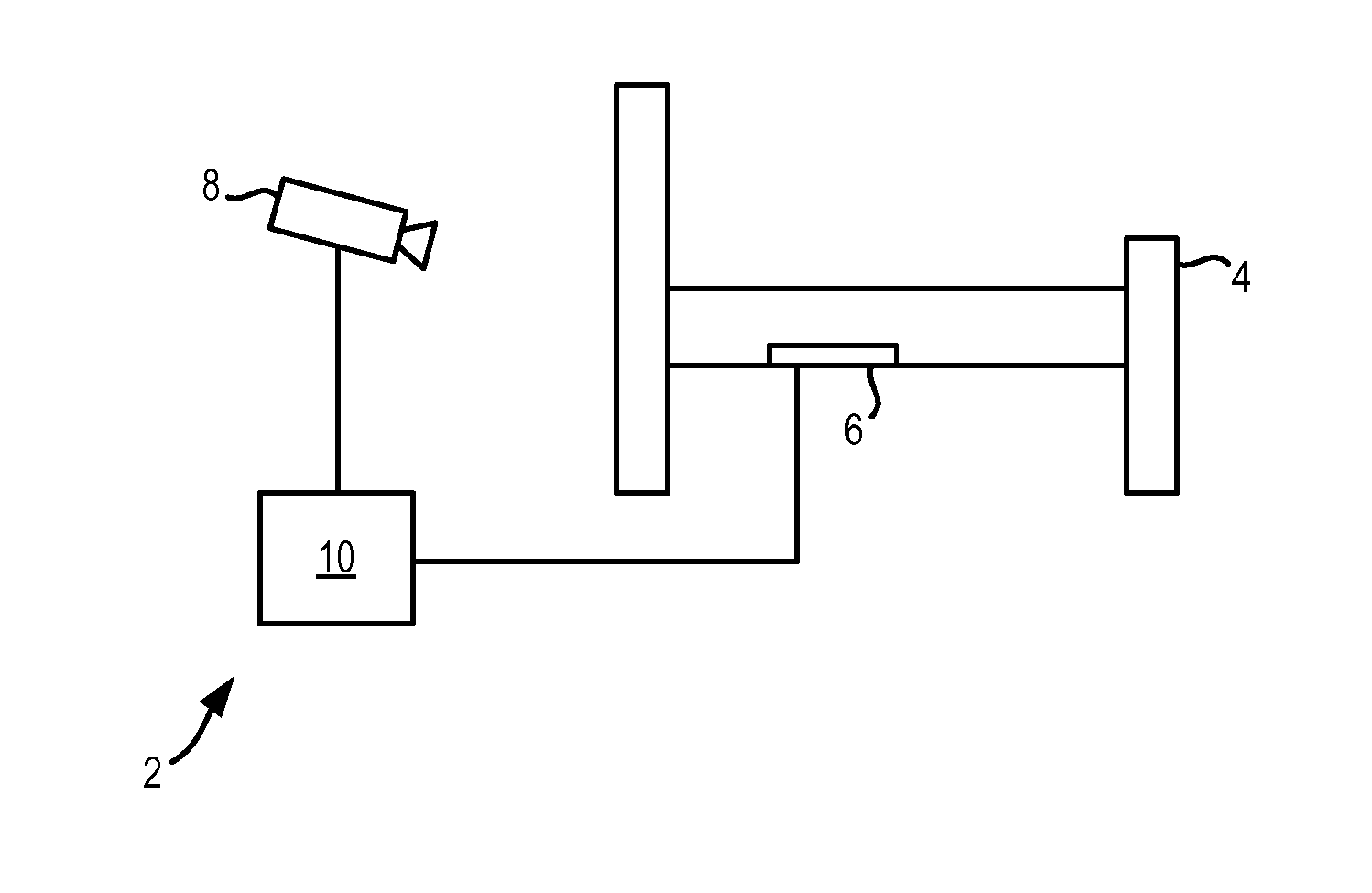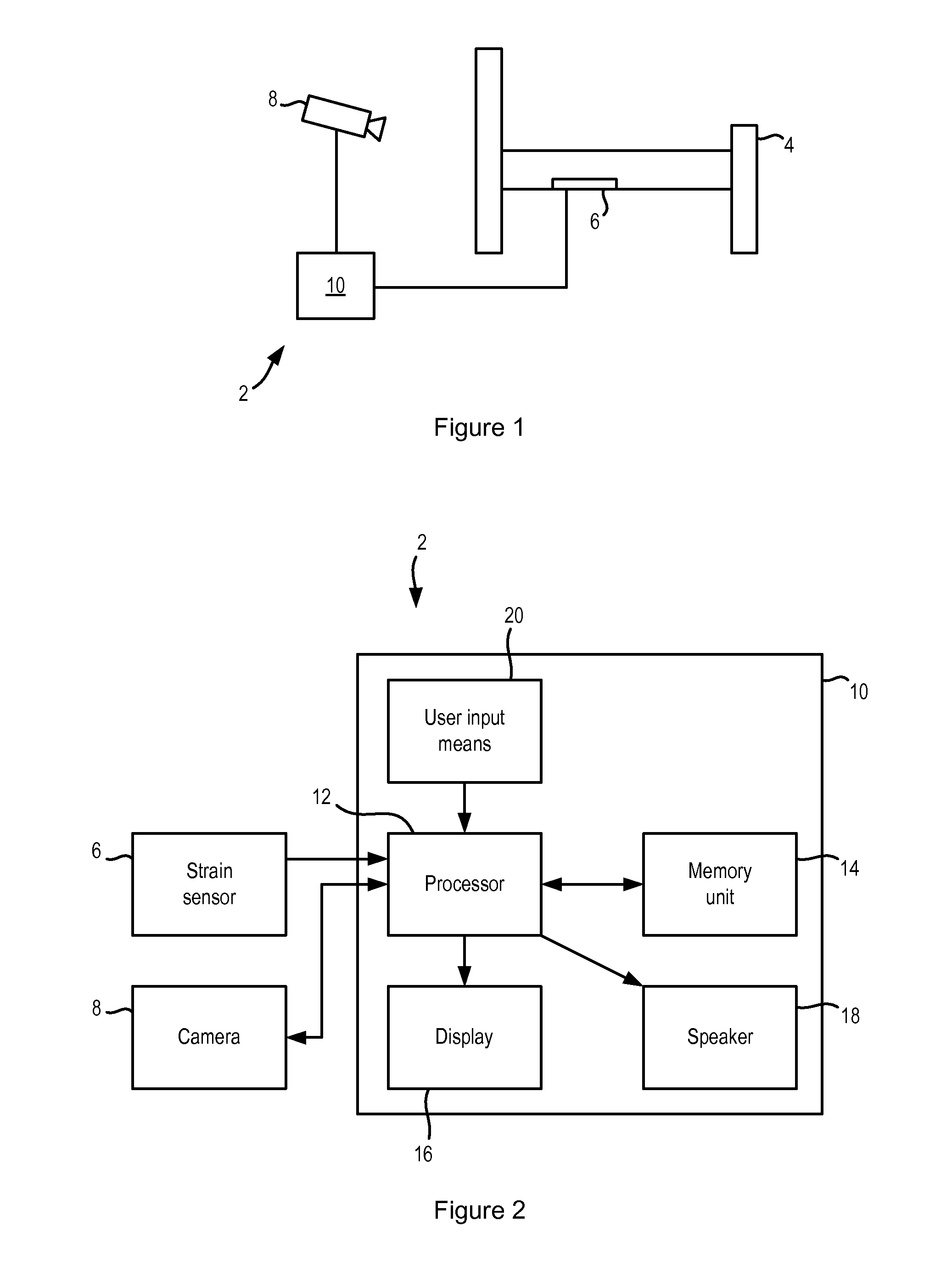Method and apparatus for monitoring the baroreceptor reflex of a user
- Summary
- Abstract
- Description
- Claims
- Application Information
AI Technical Summary
Benefits of technology
Problems solved by technology
Method used
Image
Examples
Embodiment Construction
[0041]An apparatus according to a first embodiment of the invention is shown in FIG. 1. The apparatus 2 is for use with a bed 4, such as a hospital bed or a bed in the home of the user of the apparatus 2. According to this embodiment, the apparatus 2 comprises two sensors 6, 8, the first sensor being a sensor 6 that is attached to the bed 4 and that measures the movements of the user while the user is lying or sitting on the bed, and the second sensor is a camera 8 that is located near to the bed 4 and that records images of the user while they are sitting on and standing next to the bed 4.
[0042]In this embodiment, the first sensor 6 can be a mechanical sensor 6 that preferably comprises one or more strain sensors or strain gauges that are integrated into the slats of the bed 4. Alternatively, the one or more strain sensors or strain gauges can be located on a different part of the bed 4, such as in the mattress, in or under the bed posts, or elsewhere in the bed frame. In alternati...
PUM
 Login to View More
Login to View More Abstract
Description
Claims
Application Information
 Login to View More
Login to View More - R&D
- Intellectual Property
- Life Sciences
- Materials
- Tech Scout
- Unparalleled Data Quality
- Higher Quality Content
- 60% Fewer Hallucinations
Browse by: Latest US Patents, China's latest patents, Technical Efficacy Thesaurus, Application Domain, Technology Topic, Popular Technical Reports.
© 2025 PatSnap. All rights reserved.Legal|Privacy policy|Modern Slavery Act Transparency Statement|Sitemap|About US| Contact US: help@patsnap.com



